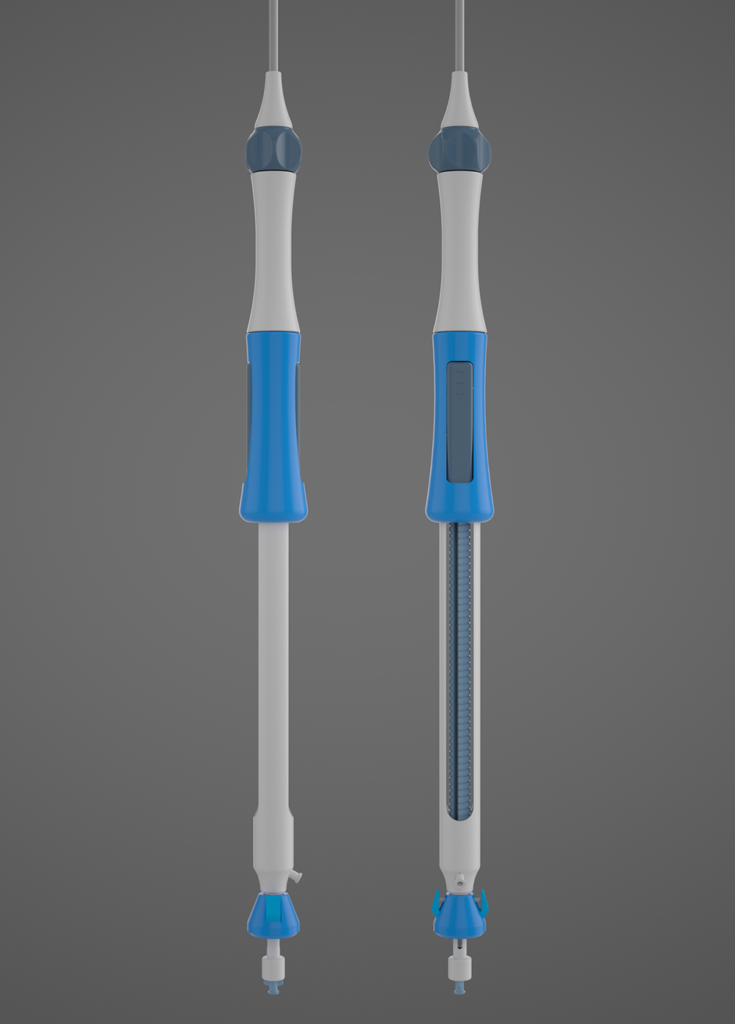Kardiozis
Principle
Kardiozis technology provides a major solution to the problems of type II endosters caused by existing stents and their consequences for patients: risks of re-intervention and anxiety induced by the possible increase in aneurysm that can lead to rupture and death of the patient.
Procedure
The endoprosthesis, hitherto compressed inside the delivery system, is then partially deployed. If necessary, the position of the endoprosthesis can be adjusted to avoid covering the renal arteries.
Once properly positioned, the Kardiozis is fully deployed and its legs released. To anchor it to the aortic wall and prevent migration, the surgeon releases the anchor pins.
This product is under clinical investigation
The surgeon positions the first extension under fluoroscopy and then deploys it. To insert the second extension, the surgeon withdraws the previous delivery systems from the vasculature.
The same procedure is repeated for the second extension, which is positioned under fluoroscopy, so that the aneurysm is completely excluded.
The delivery system and the guidewires are then retrieved from the vasculature, and the surgeon closes the incisions.
Kardiozis differs from conventional endoprostheses, which are unable to prevent other aortic branches from supplying blood to the aneurysm.
Fibers around the endoprosthesis occupy the aneurysm sac and are in direct contact with blood, which naturally forms thromboses on them.
Platelets progressively clot on the fibers and prevent retrograde blood flow from entering the aneurysm. Once clot formation is complete and the aneurysm is thrombosed, pressure decreases and the aortic diameter returns to normal.
